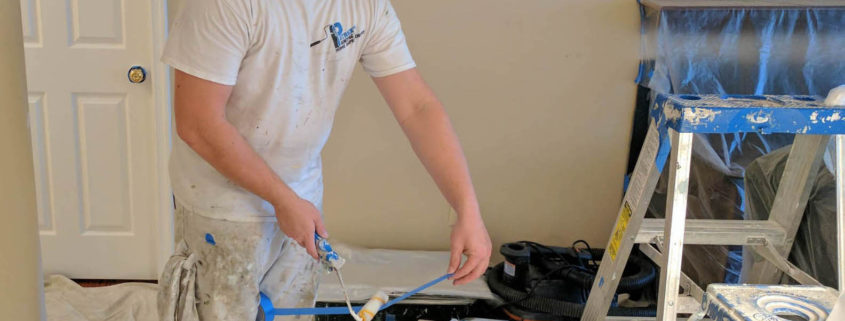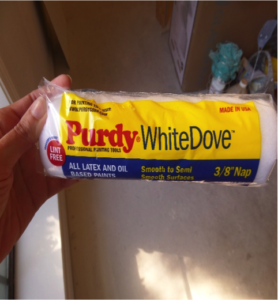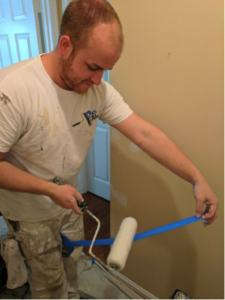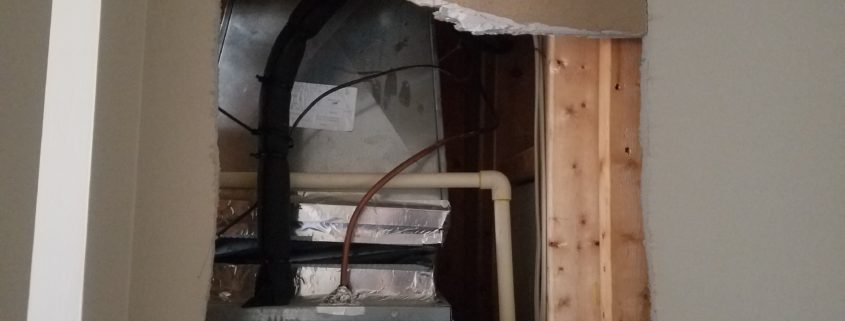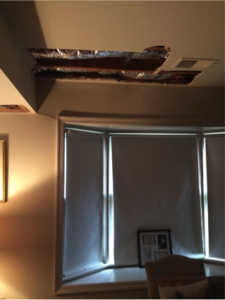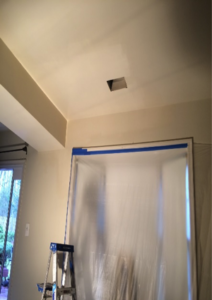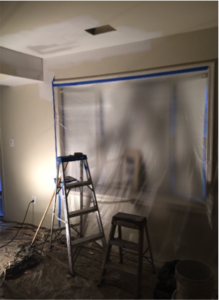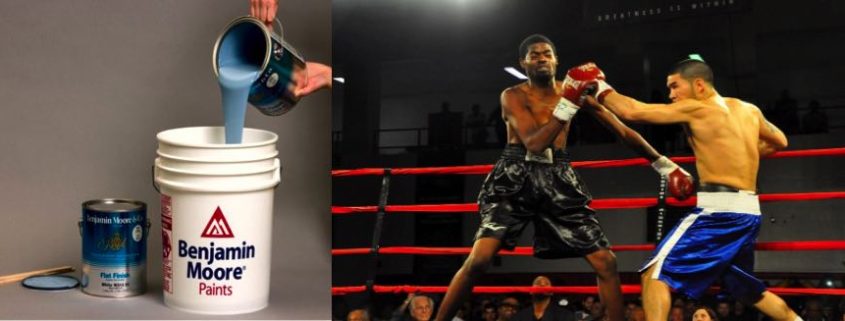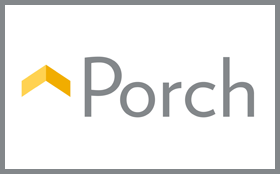Paint Sheen/Finish
Paint Sheen/Finish? We’ll just call it sheen throughout this blog so we don’t confuse anyone.
Many people have no idea what a paint sheen is or how to choose the right one for their project.
Paint sheen simply means the level of glossiness in paint. The glossier it is, the more of a shine it has. Today, most paints come in one of the following sheens: Flat, Matte, Eggshell/Satin, Semi-Gloss, and Gloss. It can be a bit overwhelming on choosing the right sheen so I’m here to help. The way I have listed the sheens above goes from least glossy to most glossy.
Flat – Flat paint absorbs light and therefore hides many surface imperfections but does not handle dirt well or stand up well to scrubbing.
Matte – Matte paint is the most popular sheen we use for walls. It is just a little more shiny than flat. It handles scrubbing well and I have used it in every area of a house.
Satin/Eggshell – When you think of Satin/Eggshell think of a silky finish. It looks good on walls and is smooth enough to stand up to dirt and cleaning. It can be used in any area of the home. We use Sherwin Williams paint products and they don’t carry an Eggshell sheen, so the equivalent to this would be Satin.
Semi-Gloss – A Semi-Gloss sheen reflects between 40-50% of the light that hits it and is very easy to clean. Most houses we go into have semi-gloss on the trim, doors, cabinetry, and shelving. This is also used in bathrooms because it reflects moisture and isn’t too shiny.
Gloss – A gloss sheen reflects the most amount of light and has the best cleaning ability; it is best for playrooms with rowdy children, laundry rooms with muddy dogs, or trim/doors that take a lot of abuse from rowdy children and muddy dogs.
Each paint sheen will vary from brand to brand. Some sheens will be shinier/less shiny than others. The downfall about a shiny sheen is that minor imperfections can be more of an eyesore compared to a Flat or Matte paint.
A general rule for sheens is that the shinier the paint is, the easier it is to clean. When choosing a sheen, take these factors into consideration.
- How much light does this room get?
- Am I going to like shiny walls?
- Is this a high-traffic area?
- Could my rowdy child possibly draw on the walls or my stinky, muddy dog dirty them up?
These are all questions you should ask yourself before making your final decision. If you need more help with your sheen, give us a call and we’ll be happy to help.


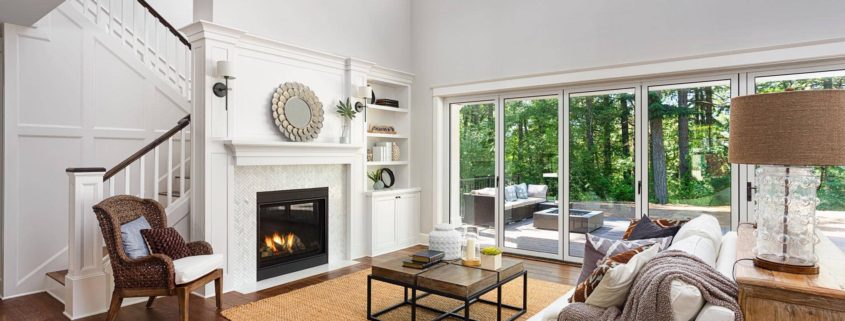
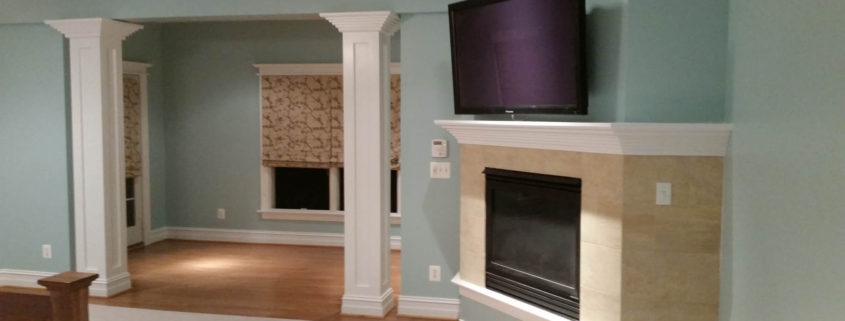
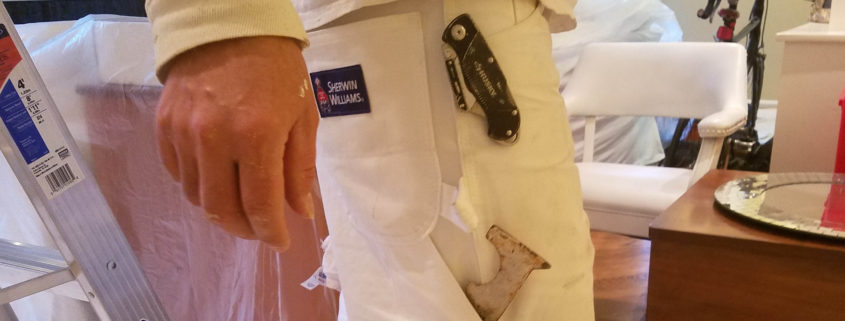
 A 5-1 is the ultimate painter’s tool, it’s like Mohammed Ali and his boxing gloves. You can scrape areas, open paint cans, hammer nail pops (nails coming through the wall) back in, pull out the paint left in your roller, and cut out old caulking with the sharp tip.
A 5-1 is the ultimate painter’s tool, it’s like Mohammed Ali and his boxing gloves. You can scrape areas, open paint cans, hammer nail pops (nails coming through the wall) back in, pull out the paint left in your roller, and cut out old caulking with the sharp tip.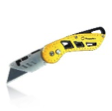 Your utility knife should always have a fresh blade and can help you with the removal of old caulking, being precise with cutting out damaged wall areas, and scraping old paint off windows (when you take the blade off the base of the knife).
Your utility knife should always have a fresh blade and can help you with the removal of old caulking, being precise with cutting out damaged wall areas, and scraping old paint off windows (when you take the blade off the base of the knife). Your rag should be damp and used for drips or splatters. It doesn’t matter if you’re the Michael Jordan of painting you’re going to have a drip or splatter every once in a while.
Your rag should be damp and used for drips or splatters. It doesn’t matter if you’re the Michael Jordan of painting you’re going to have a drip or splatter every once in a while. A duster is usually an old paint brush this will help you remove dust/debris from base trim, windows, drywall patches, etc. We like to cut our handle down so it doesn’t bulge out.
A duster is usually an old paint brush this will help you remove dust/debris from base trim, windows, drywall patches, etc. We like to cut our handle down so it doesn’t bulge out. Last but not least is the sandpaper. This allows you to sand smooth any rough areas that might have been missed or overlooked. My team and I always keep these items on ourselves. Why? If you have the proper tools on you when you run into a trouble area, you are more than likely to repair it right there instead of neglecting it.
Last but not least is the sandpaper. This allows you to sand smooth any rough areas that might have been missed or overlooked. My team and I always keep these items on ourselves. Why? If you have the proper tools on you when you run into a trouble area, you are more than likely to repair it right there instead of neglecting it.